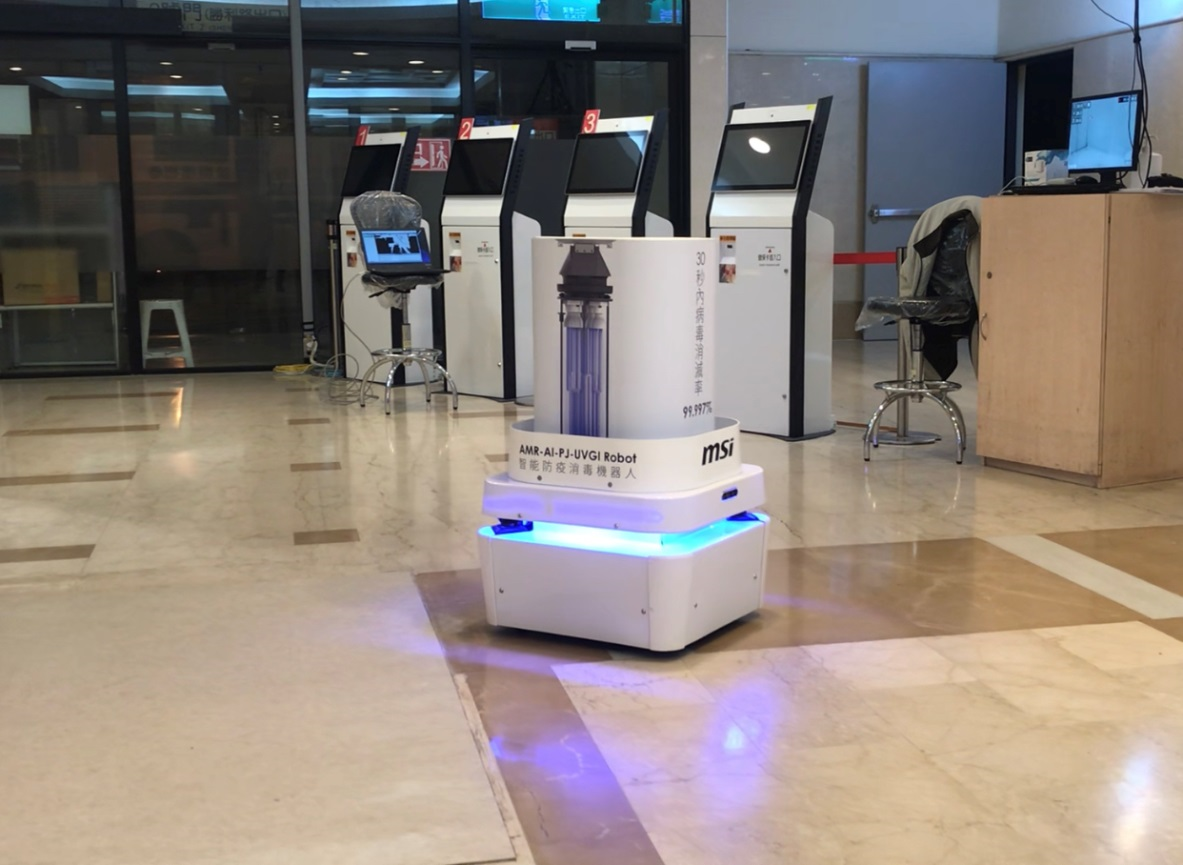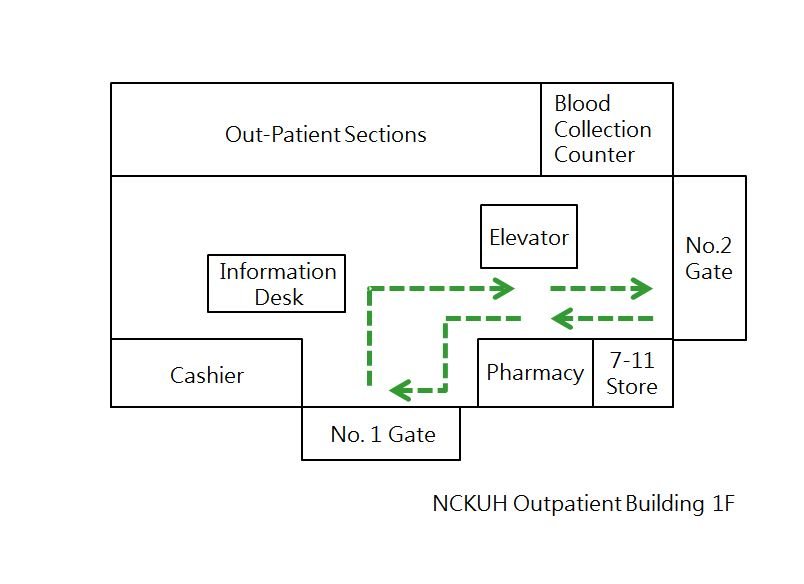Automatic Disinfection System
Jia Yun Wu, Information Engineer, Dept. of Medical Engineering
During the COVID-19 pandemic, NCKU Hospital developed and installed TOCC systems at each entrance to record the number of people entering the hospital every day. In this study, we analyzed the daily and hourly hospital entry statistics at each entrance in the first quarter of the 2022.
Subsequently, NCKU Hospital collaborated with a manufacturer to design a system that automatically dispatches robots for air disinfection. The robots are designed for mobile disinfection and are equipped with 253.7-nm wavelength high-power output ultraviolet germicidal irradiation lamps for nonchemical disinfection to prevent surface contamination. The robot filters air to destroy and decompose pathogens, molds, viruses, bacteria, and other microorganisms by using the ultraviolet germicidal irradiation lamps. To set up disinfection routes, engineers in NCKU Hospital manually navigated the robots to recognize images of the spaces where they operate. After completing the map, the engineers then planned the robots’ routes and locations where additional disinfection was necessary. The robots were then automatically dispatched at specific times. Currently, the robots are used between Gates 1 and 2 on the first floor of the outpatient building.
Disinfection robots feature dedicated operational interfaces. Robots are docked and connected to the hospital database during setup and before the start of their route. Currently, automatic dispatch times are determined according to hospital entry statistics, including rush hours. People who have traveled abroad within 14 days or are listed for home quarantine and independent health management trigger the disinfection robots to dispatch for additional disinfection. Thus, the robots improve the air quality within NCKU Hospital and provide patients with a safe medical environment.


